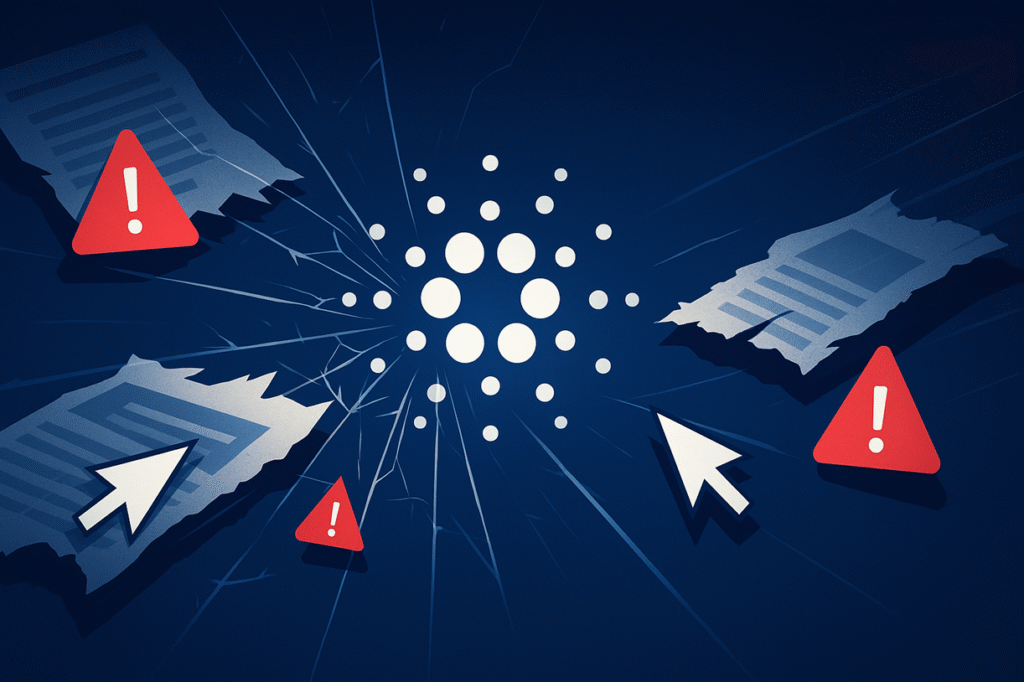In the fast-evolving world of blockchain and cryptocurrency, understanding the intricacies of decentralized finance (DeFi) platforms can be pivotal for both individual investors and the larger crypto community. The ongoing debate surrounding Cardano’s participation in DeFi offers valuable insights into the dynamics of user engagement within decentralized networks. At the heart of this discussion is not a question of blame, but rather an exploration of the factors influencing users’ financial strategies within the Cardano ecosystem.
<h1>Unpacking Cardano's Participation Gap in Decentralized Finance</h1><br />
<br />
<h2>Clarifying the Misconceptions</h2><br />
<p>Recently, Charles Hoskinson, the founder of Cardano, addressed some inaccuracies in media reports suggesting that he blamed Cardano users for a perceived shortfall in the network’s DeFi engagement. Contrary to these reports, Hoskinson clarified that the issue lies in a structural imbalance—a gap between high levels of staking and governance participation versus lower engagement in DeFi activities. This discrepancy, he noted, affects Cardano’s total value locked (TVL) significantly. "I never blamed anyone in the Cardano ecosystem for our DeFi [woes]," he insisted, highlighting the importance of understanding this participation mismatch.</p><br />
<br />
<h2>Cardano’s DeFi and Staking Participation: A Numerical Perspective</h2><br />
<p>Hoskinson's comments focus on the numerical divergence between staking participation and engagement with DeFi protocols. He pointed out that while Cardano boasts a substantial user base involved in staking, this has not translated proportionately into DeFi involvement. Some estimates suggest that although 1.3 million users are engaged in staking, only a fraction participate in DeFi. This participation gap prompts an important discussion about potential underlying causes and solutions.</p><br />
<br />
<h2>Understanding the Participation Mismatch</h2><br />
<p>The reasons behind this mismatch are multifaceted and not easily attributed to a single cause. According to Hoskinson, factors such as user experience, transaction fees, education on DeFi, and safety concerns could play a role. He calls for a comprehensive dialogue within the Cardano community to address these issues, emphasizing that "we as an ecosystem have to have that discussion." Rather than attributing blame to users, the focus should be on collaborative problem-solving.</p><br />
<br />
<h2>Strategic Governance Initiatives for Enhanced Engagement</h2><br />
<p>To address the identified gap, Hoskinson advocates for a coordinated governance strategy. By treating this issue as part of a broader governance agenda, Cardano stakeholders can work toward increasing user engagement in DeFi. He proposed that by closing this gap, Cardano could significantly boost its TVL, potentially positioning itself among the top DeFi platforms. The solution, he argued, lies in developing targeted strategies funded through delegated authority.</p><br />
<br />
<h3>How Can Cardano Improve Its DeFi Participation?</h3><br />
<p>Improving DeFi participation could involve lowering transaction fees, enhancing user interfaces, and deploying educational initiatives to familiarize users with DeFi opportunities. By addressing these areas, Cardano can encourage more users to engage in DeFi activities, thus increasing its TVL.</p><br />
<br />
<h3>Is the Participation Gap Unique to Cardano?</h3><br />
<p>No, many blockchain platforms face similar challenges where different parts of their ecosystem experience varying levels of engagement. The key is identifying these gaps and implementing strategies to balance participation across all components of the ecosystem.</p><br />
<br />
<h3>What Role Does Media Play in Shaping Perceptions of Cardano?</h3><br />
<p>Media outlets have a significant influence on public perceptions of blockchain platforms. Misrepresentations or sensational headlines can skew the understanding of complex issues like participation gaps, underscoring the need for accurate, nuanced reporting.</p><br />
<br />
<p>In summary, Charles Hoskinson’s address serves as a call to action for the Cardano community. By fostering an open dialogue and strategic approach, Cardano can work towards enhancing its DeFi engagement, ultimately strengthening its position in the competitive DeFi landscape.</p><br />
